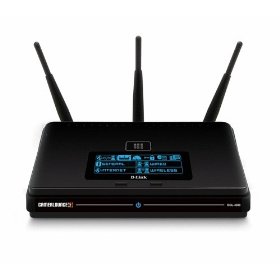
" An IT consultant works in partnership with clients, advising them how to use information technology in order to meet their business objectives or overcome problems. Consultants work to improve the structure and efficiency and of an organsiation's IT systems.
IT consultants may be involved in a variety of activities, including marketing, project management, client relationship management and systems development.
They may also be responsible for user training and feedback. In many companies, these tasks will be carried out by an IT project team. IT consultants are increasingly involved in sales and business development, as well as technical duties."(1)
In IT consulting, professionals are expected to Assist users to develop or use applications and software packages and their features. Next,Install, configure, and modify applications, networks, databases, and other systems. Moreover, Provide academic course management and related services to faculty. Also, Act as liaison and interface between faculty, staff, and information systems resources and staff.
IT Consultants typical activities involves several task:
- meeting with University Programmer to determine requirements;
- working with the University's concerned personnel to define the scope of a project;
- planning timescales and the resources needed;
- clarifying a client's system specifications, understanding their work practices and the nature of their business;
- travelling to customer sites;
- liaising with staff at all levels of a client organisation;
- defining software, hardware and network requirements;
- analysing IT requirements within companies and giving independent and objective advice on the use of IT;
- developing agreed solutions and implementing new systems;
- presenting solutions in written or oral reports;
- helping clients with change-management activities;
- project managing the design and implementation of preferred solutions;
- purchasing systems where appropriate;
- designing, testing, installing and monitoring new systems;
- preparing documentation and presenting progress reports to customers;
- organising training for users and other consultants;
- being involved in sales and support and, where appropriate, maintaining contact with client organisations;
- identifying potential clients and building and maintaining contacts.
if I were hired as the IT Consultant of the University, i'd rather suggest latest trends that are useful in our Internet Connection. Technologies, Steps and Simple Tips are essentials in making the Internet Connection more functional than before.
Here are some latest technologies that would suit our University's Internet Connection:
1. WiFi (Wireless Fidelity) is an independent organisation that tests interoperability of 802.11 products. When a product has been demonstrated to interwork with other manufacturer’s compliant products, it will carry a “WiFi” label.
SUggested Techn ology:
ology:
- Dual Band 802.11 capability is embedded in Wireless LAN access points, routers and client adapters to provide seamless roaming between 802.11a and 802.11b networks. Dual band devices will also interoperate with 802.11g.
Linksys WGA600N-RM Dual Band Wireless-N Gaming Adapter Review: Find out some price comparison of Linksys Dual Band Wireless-N Gaming Adapter (new and refurbished) items here. Because we have also published here a similar gaming adapter (Linksys WRT110 WiFi Wireles Router with RangePlus-n) we suggest you head on to that post and compare it with Linksys WGA600N-RM. The price of this nifty Linksys Dual Band Wireless-N Gaming Adapter on woot was $32.99 (refurbished or reconditioned item) + $5 shipping. Thought the price of 1 Linksys WGA600N-RM Dual Band Wireless-N Gaming Adapter on said site is cheap, the scenario is somewhat different in other sites. On Buy.com, you can have one of these networking gadgets for under $40. A huge savings still if you buy it on woot.
Linksys WGA600N-RM | The Cheap Dual Band Wireless-N Gaming Adapter
Linksys WGA600N-RM | The Cheap Dual Band Wireless-N Gaming Adapter
Take for example on Amazon, the price there for new Linksys WGA600N-RM starts from $70.99 (new). The reconditioned ones are still expensive with a tag price of $65. Mind you, these amounts do not include shipping yet.
According to its manufacturer, the Linksys Dual Band Wireless-N Gaming Adapter model WGA600N-RM has a dual capability and can connect through the 2.4Ghz and 5 GHZ (whichever is applicable in the user’s case. Consumer reviews are generally good despite some problems with its configuration, especially the assignment of an IP address. This is because Linksys model WGA600N-RM Dual Band Wireless-N Gaming Adapter “connects to your Ethernet-enabled Xbox, PlayStation, GameCube or other Ethernet-enabled gaming consoles – no drivers required.”
Some enticing features of Linksys WGA600N-RM Dual Band Wireless-N Gaming Adapter include the following
- Compatible with draft 802.11n, 802.11a, 802.11b and 802.11g compliant devices
- Operates in the 2.4 GHz and 5 GHz frequency ranges for maximum flexibility
- Dynamically shifts channels and wireless networks based on signal strength and link quality for maximum availability and reliability of connection
- Secure Wireless LAN party gaming mode: one gaming adapter acts as a wireless AP, any further gaming adapter connects automatically using WPS – no computer required to setup the adapters
- Utilizes up to 256-bit Wireless Protected Access (WPA/WPA2) to ensure security
- Easy Setup with WPS (Wireless Protected Security)
- Works with all network-ready game consoles, including Xbox, Xbox 360, Playstation 2* or 3, and GameCube*
- 802.11g wireless broadband routers support higher speeds and more options than older 802.11b routers. If upgrading from 802.11b, you should notice faster file sharing and printing, and you can add more computers to an 802.11g network without bogging it down.
802.11g routers are not as fast or full-featured as newer 802.11n wireless routers. However, when you consider their solid performance, overall capabilities, and more affordable pricing, an 802.11g router may still be right for you.802.11n is the third-generation Wi-Fi standard for wireless home networking. 802.11n equipment is backward compatible with older 802.11g or 802.11b gear, and it supports much faster wireless connections over longer distances.
So-called Wireless N or Draft N routers available today are based on a preliminary version of the 802.11n industry specification. They are not guaranteed to fully interoperate with future 802.11n products.
All products listed in this category feature three MIMO radios and antennas that are the key feature of Wireless N routers, plus four-port 10/100 Ethernet switches for wired connections.
WIFI's are now essentials to student's learnings. through their laptops.. its better to surf. Hassle FRee.
2. LAN TopoLogy Innovation
Today, technology plays a central role in sparking the imagination, facilitating learning and creating new possibilities in education environments. In particular, networking technology can deliver to primary and secondary schools a wide range of vital broadband capabilities.The foundational requirements needed to achieve leading edge functionality for education include the advantages of high-speed local-area networks (LANs), the migration from hubs to switches in the wired environment, and the enhanced flexibility, mobility, portability, and scalability enabled by a combined wired and wireless infrastructure.
Here are Some suggested Cisco Guidelines in this matter:
- Learning—e-Learning has become a vital tool for education. Through e-learning, schools are providing students with tremendous flexibility, while extending their programs outside the classroom.
- Online Content—In the school environment, online content is fast becoming the rule. This content—which may include curricula, tutorials, reference materials, and records—must be accessible to students and/or staff quickly and efficiently.
- Multimedia Capabilities—Flat data files quickly are being replaced by rich multimedia content. Therefore, school system networks must be robust enough to support rich multimedia applications, as well as streaming media.
- Converged Voice, Video and Data Applications—Converged voice, video and data applications, like IP telephony, enable far greater interaction among students, educators and parents. Some of the wide-ranging capabilities of such applications might be used to facilitate better parent communication and involvement or help ensure student safety.
- Mobile Computer Labs—Increasingly, students need to access broadband applications outside of the computer room. Therefore, mobile computer labs are fast becoming popular in the school setting. With mobile computer labs, PCs and laptops are carted into individual classrooms, where students have full access to broadband capabilities through wireless connections.
3. Integrating Wireless LAN
For many school environments, wireless technology is an important addition to the network. In a high-performance switching environment, wireless technology can deliver Ethernet-level speeds reaching 11 Mbps to open areas on the campus like informational kiosks in the quad or cafeteria. Typically, a wireless network cannot replace the wired LAN. However, it can dramatically improve the usability and scalability of the existing network. Many successful school implementations have shown that wireless technology delivers substantial administrative, learning, and cost-savings benefits.
Advantages:
Portable Computing: More Users with Fewer Connections
wireless technology allows users to achieve total PC portability and location independence. Wireless allows schools to put computer resources wherever they are needed without hardwired connections for every computer. With a WLAN, a single hardwired drop linked to a wireless access point in any classroom provides a network access point for multiple PCs equipped with WLAN adapters. This type of configuration eliminates the location constraints of hardwired structures, and maximizes utilization of PC resources. As a result, laptops can be taken along and used in any location. In fact, schools can even set up mobile computer labs, in which laptops or PCs are carted into individual classrooms on an as-needed basis. Wireless broadband technology then can be brought to every classroom and every student, greatly enriching the learning experience for all subjects. In the ever-changing school environment, wireless technology can also reduce the cost and complexity of facility reconfigurations.
Generally, wireless technology assumes three principal roles. First, schools add wireless to the LAN to give users greater mobility and flexibility in schools and school campuses. Secondly, wireless provides LAN access in buildings that are difficult to rewire for high-speed access. And, lastly, wireless bridges deliver LAN connectivity to remote sites and users. Each type of access can yield substantial benefits for students, faculty, and staff.
4. High-Speed LANs
The wired LAN is the principal means of connection for the high-speed school LAN—even in an integrated wired and wireless environment. Compared to wireless technology, the wired LAN offers significantly higher transfer rates over both short and long distances. However, steps must be taken to achieve maximum performance for your wired LAN. For instance, the network infrastructure must be optimized with a configuration that delivers sufficient bandwidth and intelligence to meet increasing traffic demands. In addition, your wired LAN should feature:
* Robust Quality of Service (QoS)—QoS enhances bandwidth management so that high-priority traffic receives preference on the network.
* Continual Network Availability—Maintaining high availability is vital for any mission-critical school LAN.
* Security—In a common infrastructure, data and application access must be restricted and protected.
5. Steps
1. Do some basic maintenance on your PC. Run Disk Defrag, a scan disk, a virus scan, a malware scan, and clear your recycle bin. An unusually slow Internet connection experience is often the only sign that your computer is infected with viruses or other malware. Delete old files and temporary files. Never allow the free space on your C: drive to be less than 10% of the total size or twice the installed RAM (which ever is larger). A well maintained PC will operate much better than a PC that has never had any maintenance. Google or your local computer repair store should be able to help you with this if you don't know how.
2. Reset Your Home Network. Sometimes restarting your home network if you have one will drastically increase the speed of your connection.
3. Optimize your cache or temporary Internet files. These files improve your Internet connection performance by not downloading the same file over and over. When a web site puts their logo graphic on every page your computer only downloads it when it changes. If you delete the temporary files it must be downloaded again. if you disable the cache, it must be downloaded every time you view a page that uses it. This can be done by opening Internet Explorer, clicking on "Tools" at the top and choosing "Internet Options". On the General tab, click the "Settings" button next to Temporary Internet Files. Set Check for newer versions to "Automatically". Set amount of disk space to use to 2% of your total disk size or 512 MB, which ever is smaller. On Firefox, click "Tools" then "Options," and go to the privacy tab. Then click on the Cache tab within this.
4. Never bypass your router. Most routers include a firewall that is very difficult for hackers to defeat. If you don't need to use Wireless then hook your computer directly to your router. Routers will only slow down your connection by a few Milli-seconds. You won't notice the difference but the hackers will.
5. If you are using a Wireless router, make sure it doesn't conflict with a cordless phone or wireless camera. Wireless routers come in two varieties; 802.11bg (2.4Ghz) or 802.11a (5.8Ghz) If you are using a 2.4Ghz Cordless phone and 2.4Ghz Wireless router then your Internet connection speed will slow while you use the cordless phone. The same is true of wireless security cameras. Check on your phone and camera, if it's 900Mhz then it's fine. If it says 2.4Ghz or 5.8Ghz then it could be the cause of your slow connection speed while they're in use.
6. Call your Internet service provider (ISP). Sometimes you just have bad service. They can usually tell if your connection is substandard without having a technician come to your home. Just be nice and ask.
7. Upgrade your computer. If your computer is slow, it doesn't matter how fast your Internet connection is, the whole thing will just seem slow. You can only access the Internet as fast as your PC will allow you to.
8. Replace your old cable modem. Any solid-state electronics will degrade over time due to accumulated heat damage. Your broadband modem will have a harder and harder time 'concentrating' on maintaining a good connection as it gets older (signal to noise ratios will go down, and the number of resend requests for the same packet will go up). An after-market cable modem as opposed to a cable-company modem will frequently offer a better connection.
9. Often your connection speed is slow because other programs are using it. To test if other programs are accessing the Internet without your knowing, Click Start, Click Run. Type "cmd" (without quotes). Type "netstat -b 5 > activity.txt". After a minute or so, hold down Ctrl and press C. This has created a file with a list of all programs using your Internet connection. Type activity.txt to open the file and view the program list. Ctrl Alt Delete and open up the Task Manager. Go to the process menu and delete those processes that are stealing your valuable bandwidth. (NOTE: Deleting processes may cause certain programs to not function properly)
10. After you have tried all this try your connection again and see if it's running any faster.
6. Tips
- Call your ISP and have them verify all of your TCP/IP settings if you are concerned. Ask them to verify that your Proxy settings are correct.
- Don't expect dial up or high speed lite service to be fast. The Internet is primarily geared towards Broadband Connections. Sometimes, you have to wait a little.
- Download programs that make browsing faster:
o Loband.org is a browser inside of a browser that loads web pages without the images.
o Firefox and Opera both have options to disable images.
o In Firefox, you can also use extensions such as NoScript that let you block scripts and plug-ins that would otherwise slow things down a lot.
o If you are using Internet Explorer or Firefox, try downloading Google Web Accelerator. It is meant to speed up broadband connections, but it can also slow your Internet connection. Try enabling it and disabling it and see when your Internet connection runs faster.
o If you are using Firefox, download the Fasterfox extension and Firetune.
o Reduce the amount of programs running that use your Internet connection (Instant Messengers, RSS Feeders, and MS Applications set to send Internet data)
o Google Accessible Is designed to search pages in order of how clean they are of junk. This will bring up pages that are usually not only easy to read, but are quick to load.
- Upgrade your RAM. This will not only improve your regular computer use, but it will affect the speed of your Internet connection because your computer works faster.
- Use the Stop button to stop loading pages once you've gotten what you want.
- Some times malware on your computer can eat up your bandwidth. Make sure you have an up-to-date malware protection program.
- Most Internet Providers have flaky DNS servers (no citation necessary, it's a given) - so, instead of using those provided by your ISP, switch your DNS servers to use those of OpenDNS. OpenDNS is far faster, and more reliable, simply using 208.67.222.222 and 208.67.220.220 as your domain name servers will speed up most flaky DNS problems (may even speed up your networking since OpenDNS has large caches).
- Look into running your own local DNS server on your network. Some newer routers may include their own nameserver, otherwise, check into AnalogX.com's DNSCache program, it works great to hold commonly accessed domain names in the "cache" so that the IP addresses do not have to be looked up everytime you navigate to a new page.
7. Warnings
- Viruses and malware can often use up your bandwidth and slow down your Internet connection. Make sure you have protection against this. Many ISP's will provide software for this. Make sure your anti-virus and malware scanners are up-to-date.
- Bypassing the router will leave you more vulnerable to attacks because you no longer have the built-in firewall from your router protecting you.
- Watch out for scams that claim to make your Internet go a lot faster for free. They may tell you to download their program, which usually has a lot of other hidden programs attached that might steal your identity.
IT consultant is quite a difficult task..
http://www.wikihow.com/Maximize-the-Speed-of-Your-Internet-Connection
http://www1.ous.edu/owpd/plsql/owpd_pos_desc?p_pos_id=111
http://www.kokeygadgets.com/featured/networking/linksys-wga600n-rm-review-linksys-dual-band-wireless-n-gaming-adapter/
http://compnetworking.about.com/od/wirelessrouters80211g/tp/80211ghome.htm
Wednesday, September 30, 2009
SPEED UP INTERNET CONNECTION at Campus
Posted by frozen_flower at 11:11 AM
Subscribe to:
Post Comments (Atom)

0 comments:
Post a Comment